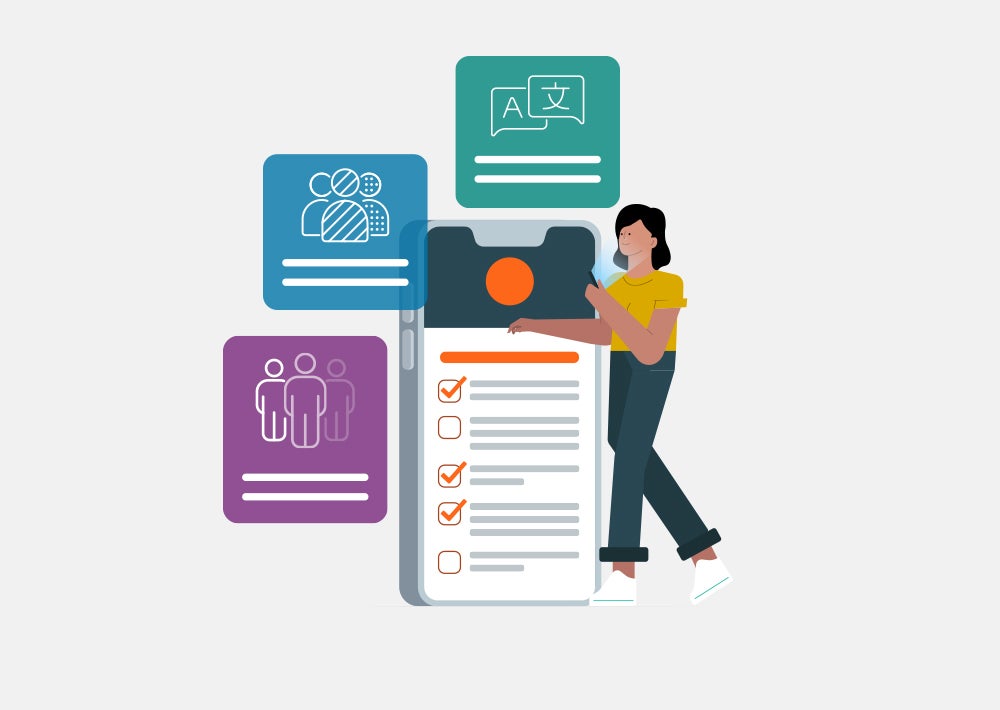For rural Americans, the simple tasks associated with a doctor’s visit are often not so simple. The challenges that rural patients face in accessing care and the health disparities that affect them cannot be overstated.
Like all patients, those who live in rural areas deserve a high-quality, convenient healthcare experience that makes them feel valued. Healthcare organizations that are able to meet expectations and build trust with rural patients are more likely to be able to engage them to address gaps in care.
Technology can help healthcare organizations reduce the obstacles that rural patients face and offer them the convenient, digital-first experience they’ve come to expect from other consumer-facing industries. In this blog post, we share advice on how to increase technology adoption among rural patients, make visits more efficient and activate patients to drive better outcomes.
Don’t assume rural patients won’t use technology
Too often, healthcare organizations and their vendors assume that older patients and those who live in rural communities won’t use technology to manage their healthcare needs. Gerald Harmon, MD, a rural family physician and Immediate Past President of the American Medical Association, called this assumption a “systemic problem and a structural myth” during a recent Phreesia webinar.
Although reliable rural broadband access is a persistent challenge, patients in these areas use the internet just as often in their daily lives as their urban counterparts and are just as likely to have a mobile device, according to a recent Phreesia survey. In addition, across geographies, Phreesia research shows that the overwhelming majority of U.S. patients (86%) are comfortable using technology to manage their healthcare needs.
Nevertheless, while nearly nine in 10 patients are willing to use technology, healthcare leaders also should consider how to connect with the 14% of patients who are less comfortable with digital tools. Privacy and security concerns were tech-shy patients’ top reasons for not using healthcare technologies, according to our research, followed by a desire for easier-to-use tools.
With those concerns in mind, it’s important for healthcare organizations to make sure their digital tools comply with strict industry standards like HITRUST CSF, PCI DSS and SOC 2, so that patients feel assured that reputable third-party organizations have deemed technologies to be trustworthy.
And while some patients may be more comfortable with technology than others, healthcare organizations can break down barriers for all patients by offering tools that don’t require users to log in or use an app. For example, when messaging patients, healthcare organization should reach out to them with easy-to-understand technologies they already use, like email and text.
Finally, it’s important not to forget to “train the trainers.” Managers should schedule adequate time for staff to learn new digital processes so they are equipped to help patients—and leadership also should make sure their technology provider can support all employees in making those transitions.
Make the most of patients’ time in the doctor’s office
Rural patients often face challenges accessing care, as many drive long distances to see a doctor. On average, they drive twice as far to reach the nearest acute-care facility compared to urban and suburban patients, and that facility may not be able to provide the care they need. Specialists may be even farther away. For example, fewer than 50% of rural women have access to perinatal services within a 30-mile drive from their home, and nearly 1 in 5 rural Americans live more than 60 miles from a medical oncologist.
“Some of the biggest risks to their safety is the transportation to the doctor’s office,” Harmon said during the webinar. “We’ve got to make technology available to them and bring healthcare into the comfort and safety of their home.”
Because travel can be challenging for rural patients, it’s also important to have flexible appointment policies that make it easy for them to cancel and reschedule their appointments online, or convert them to telehealth visits.
Once they get to their doctor’s office, rural patients also can’t afford waiting room delays: Rural residents are more likely to have lower-income and less likely to be able to take paid time off from work than their urban and suburban counterparts. Healthcare organizations can show that they value their patients’ time by offering them the option to complete medical check-in on their mobile phone prior to their visit at a time and place that is convenient for them. This convenience not only reduces patient wait times but also relieves staff from transcribing paper intake forms, which takes significant time and sometimes results in inaccurate or incomplete recordkeeping.
Advance health equity by activating rural patients in their care
Rural patients face significant health disparities, so it’s important that healthcare organizations engage them to ensure patients complete routine visits and take care of their health.
Using digital tools to automate appointment reminders and target specific patient populations with educational content can make this communication easier and simpler for patients and staff alike. Patients increasingly expect to use digital communication, and automated messaging frees up valuable staff time.
Pre-visit screening for clinical and social risk factors further supports more meaningful conversations in the exam room, as it equips clinicians with critical information about their patients’ needs. Pre-screening saves crucial clinician time, forges strong patient-provider relationships and helps connect patients to the resources they need, from specialty care to local social services.
Technology can help your organization advance health equity and provide the same level of service to rural patients as they’d expect at an urban facility—even when staffing is a challenge.
“Don’t ever shortchange these individuals,” Dr. Harmon said. “They deserve the best-quality care and there’s every reason to expect them to embrace digital health tools.”
Technology can help rural healthcare organizations identify health disparities and deliver the digital-first experience patients expect. Learn how Phreesia can support your staff and help your organization streamline intake, scheduling, payments and more.




